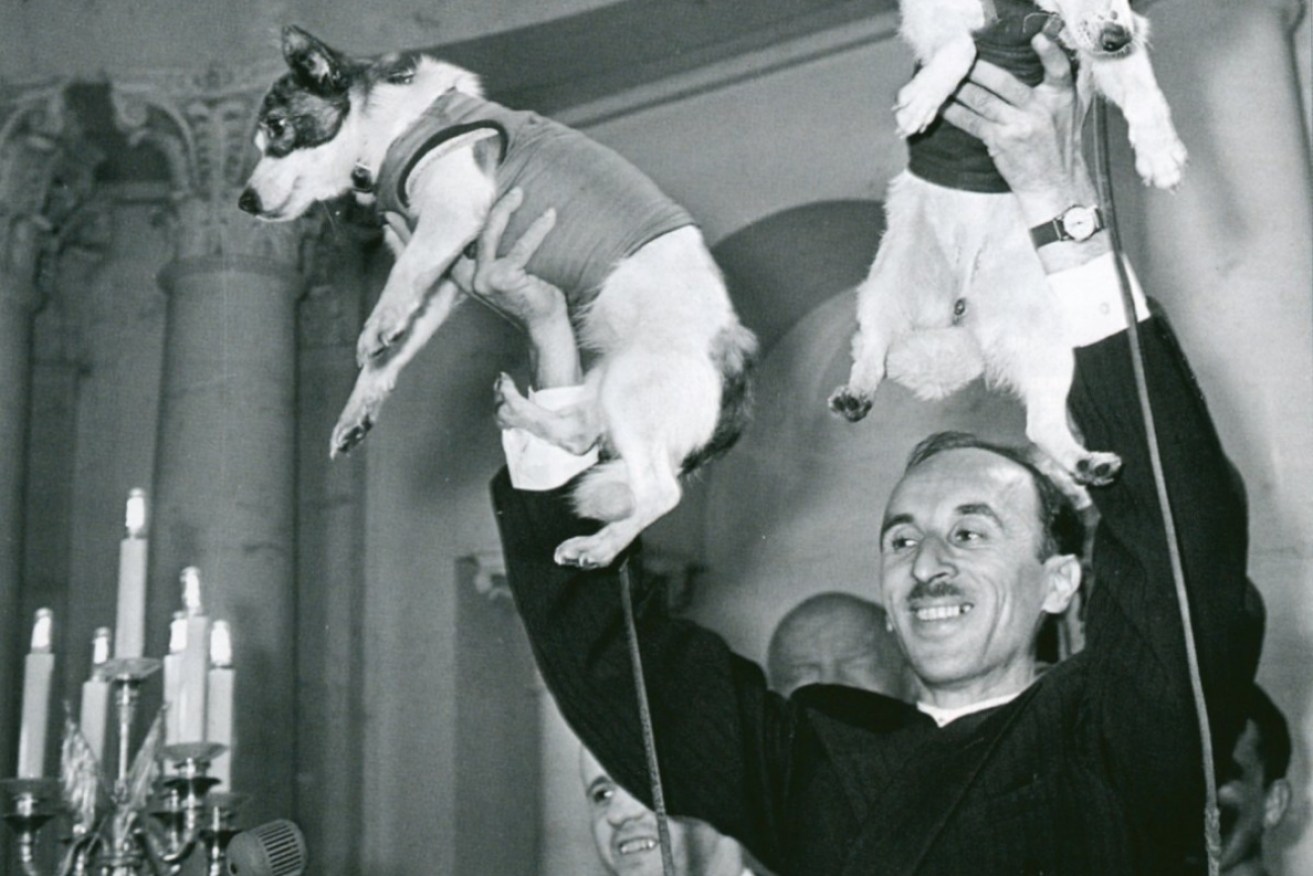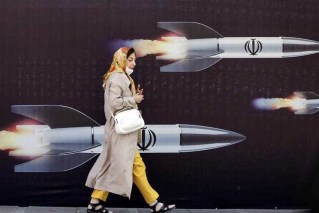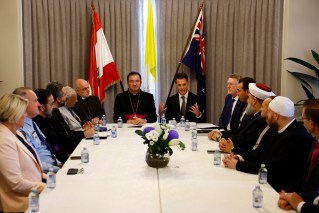On this day: The out-of-this-world canines who survived space


Oleg Gazenko, director of Russia’s Institute of Biomedical Problems, holds up Belka (right) and Strelka (left). Photo: RIBM
Nine years before Neil Armstrong took one giant leap for mankind and stepped out on to the surface of the Moon, the Soviet’s sent an ark of animals into space.
On August 19, 1960, the Russian government launched the Korabl-Sputnik 2, which was manned by a crew of two dogs, a grey rabbit, 42 mice, two rats, fruit flies and several plants and fungi.
It was the first space flight to put animals into orbit and return them safely back to Earth, paving the way for the Soviets to send a human just eight months later.

Belka and Strelka spent a day in space in 1960.
The dogs, Belka and Strelka (which translate to squirrel and Arrow) spent the day with their crewmates sailing through space.
It was a difficult job – their predecessors had been killed a month before when their launch vehicle disintegrated after take-off and they plummeted back to Earth.
They were declared dead on impact.
While Belka, Strelka and the other animals survived, it wasn’t all smooth orbiting.

Russian stamp commemorating the 50th anniversary of the space flight. Photo: Russian Post
Russian doctors became alarmed when neither dog moved during the first three orbits of the Earth, according to Chris Dubbs, author of Space Dogs: Pioneers of Space Travel.
“Finally, on the fourth orbit, Belka gave a little shudder and vomited,” he wrote.
Tweet from @russianembassy
“It seemed to snap both dogs out of a trance, breaking the spell of the strange experience of being without gravity. For the rest of the flight, they looked more alert.”
Belka and Strelka had done what many of their paw pals had failed to do before them – survive an orbit around Earth.

Belka and Strelka have been preserved. Photo: Best Russian Tour
A year later, Strelka gave birth to a litter of six puppies, one of which was given to US President John F. Kennedy as a gift for his children.
To this day, you can still meet the Russian heroes.
Both Strelka and Belka have been preserved via taxidermy and are on display at the Moscow Museum of Space and Aeronautics.








